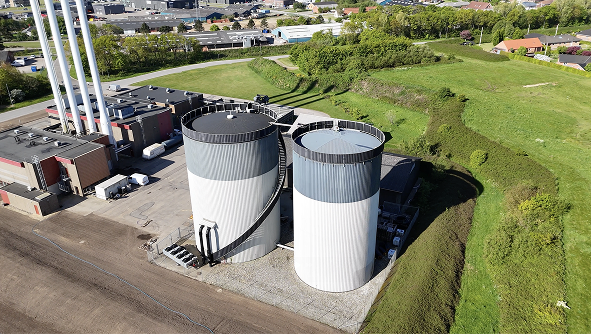Getting Heat Network Ready
By 2050, heat networks could supply up to 20% of the UK’s heating needs. New policy means key buildings such as public, commercial and anchor-load buildings will need to connect or be ready to connect.
This requires cutting energy use, improving efficiency, and ensuring low return temperatures to make future heat network connections as seamless as possible.
The Energy Act 2023
Heat network zoning enabled by the Energy Act 2023, will designate areas where heat networks are expected to be the lowest-cost solution. In England certain buildings must either connect to a heat network or be ‘heat network ready.’
New and existing buildings may be required to connect-or be “heat network ready”
New buildings in zones which do not connect before completion will need to be ‘heat network ready.’
It proposes requirements for certain building types (including large non-domestic and existing communal buildings) to connect, or be prepared for future connection.

Buildings required to connect or be “heat network ready”
New development in designated zones must either connect before completion or meet “heat network ready” standards, such as space provision for pipes, adequate insulation, and communal heating compatibility.
Existing buildings with communal heating and non‑domestic buildings above threshold energy use could also be mandated to connect.

BECOMING 'HEAT NETWORK READY'
AUTOMATIC MONITORING & TARGETING (AM&T)
A 'heat network ready' building relies on a complex interaction of several technologies and systems; this makes managing a building's energy usage and performance extremely difficult. Simply relying on the Building Management System (BMS) is not sufficient, high-quality data is essential. This means installing energy meters and utilising an effective Energy Management System (EMS).

Reducing Energy Requirements
Significant energy savings can often be achieved with little or no investment, simply by changing user habits, optimising heating system management, and eliminating common sources of waste, such as out-of-hours operation. For deeper impact, targeted investment in a fabric-first approach can dramatically reduce heat loss through improved insulation and measures like heat recovery ventilation.

Improving Operational Efficiency
Low return temperatures are crucial in a heat network because they indicate that the heat delivered to a building has been fully utilised before returning to the network. This not only improves overall system efficiency but also reduces the energy required for pumping, as lower return temperatures improve the temperature differential (ΔT), allowing the same amount of heat to be moved with less flow. Low return temperatures also enable renewable heat sources like heat pumps operate at their optimal performance. End users can help achieve low return temperatures by improving internal controls and by balancing of heating systems using pressure independent thermostatic radiator valves (PI-TRVs.
